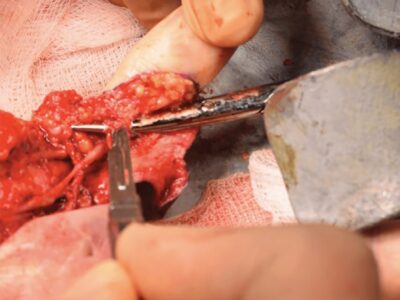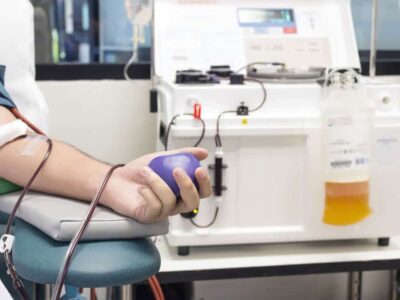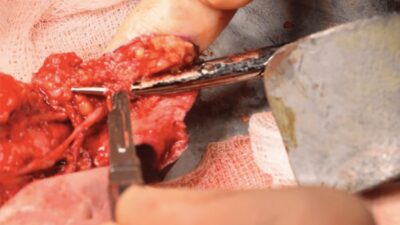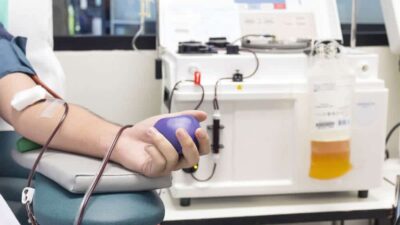
Cataract surgery has seen remarkable advancements, transforming from a once-conventional procedure to a tapestry of cutting-edge technologies and practices. However, the advent of these innovations has brought about a focus on a lesser-known postoperative complication: dry eyes. Our cataract and eye disease specialists are continually adapting to these changes in technology that are revolutionizing surgery, often with the patient’s comfort in mind.
While dry eyes may seem like a fleeting side effect, they hold significant bearing on the patient’s healing process, and, importantly, on the final visual outcomes. In this post, we will explore how pioneering specialists are overcoming the challenges of dry eyes to ensure a seamless and successful cataract surgery experience for their patients.
Understanding Dry Eyes in Cataract Surgery
Cataracts, clouding of the eye’s natural lens, often necessitate replacement through surgery. With an increasingly aging population, the need for cataract surgery is more prevalent than ever. Post-surgery, many patients experience dry eye symptoms, a condition that disrupts the eye’s ability to produce tears or maintain even tear distribution. For cataract patients, dry eyes pose not only discomfort but also a hurdle to the healing process, which can affect the visual acuity achieved post-surgery.
Causes and Implications
The causes of dry eyes post-cataract surgery can vary, from the temporary disruption of the cornea’s nerve endings during the procedure to the postoperative use of medications that can inhibit tear production. The implications of dry eyes can be far-reaching, including delayed healing, blurred vision, and discomfort that could hamper patient compliance with prescribed eye care.
Importance for Postoperative Care
Recognizing the signs and managing dry eyes effectively are crucial aspects of postoperative care. This involves not only treatment but also patient education on what to expect and the importance of adhering to the care regimen to facilitate recovery.
Innovative Solutions for Dry Eyes
The constant march forward in the medical field has brought forth innovative solutions to tackle dry eyes. Ophthalmic specialists are at the forefront, integrating state-of-the-art technologies into their dry eye treatments.
Advanced Technologies in Surgery
Intraocular lenses (IOLs) play an integral role in maintaining vision clarity post-surgery. Advanced lens technology now includes IOLs with material properties that reduce the incidence of dry eyes. Surgeons also have access to phacoemulsification systems, which are engineered to minimize the intraoperative stress on the eye, subsequently impacting postoperative dry eye symptoms.
Medications and Postoperative Strategies
Preserving tear function is a multifaceted approach. Specialists have an array of medications and strategies at their disposal, including punctual plugs, which help retain tears, and prescription eye drops that stimulate natural tear production. Additionally, patient discomfort can be managed through the use of hydrogel ocular bandages and temporary moisture chamber glasses.
Enhanced Patient Outcomes
By effectively treating dry eyes, cataract surgeons are not only enhancing patient comfort but also elevating the standards of care, which translates into improved visual outcomes and patient satisfaction.
Benefits of Addressing Dry Eyes
Patients with well-managed dry eye symptoms post cataract surgery experience a swifter recovery, often with less inflammation, reduced discomfort, and a faster return to clear, unobstructed vision. Addressing dry eyes on a systemic level also minimizes the need for prolonged medication use, which can carry its own set of risks.
Improved Recovery and Visual Results
The ability to reinvent postoperative care with an emphasis on dry eyes has led to patients achieving their intended visual acuity more efficiently. This can be especially impactful for patients with multifocal IOLs or premium lens options, where even subtle disturbances in vision can be particularly bothersome.
Conclusion
The treatment of dry eyes is a testament to the adaptability and ever-evolving nature of cataract surgery. As innovations continue to emerge in the field, the focus on comprehensive patient care remains unwavering. With technology and new strategies at their side, specialists are creating an environment where patients can expect not only a successful procedure but also a personalized and comfortable recovery.
For cataract and eye disease specialists, the conversation on dry eyes is not merely a part of the recovery process—it is central to the enhancement of patient care practices. As we look to the future, it is clear that addressing dry eyes is just one part of the ongoing dialogue that will bring forth even more sophisticated and patient-centric innovations in cataract surgery.
In the pursuit of excellence, specialists are clarifying and sharpening the vision of thousands, one cataract surgery at a time. With a steadfast dedication to adapting to the new and leveraging the possible, the future of cataract surgery—and the eyesight it restores—is brighter than ever.











